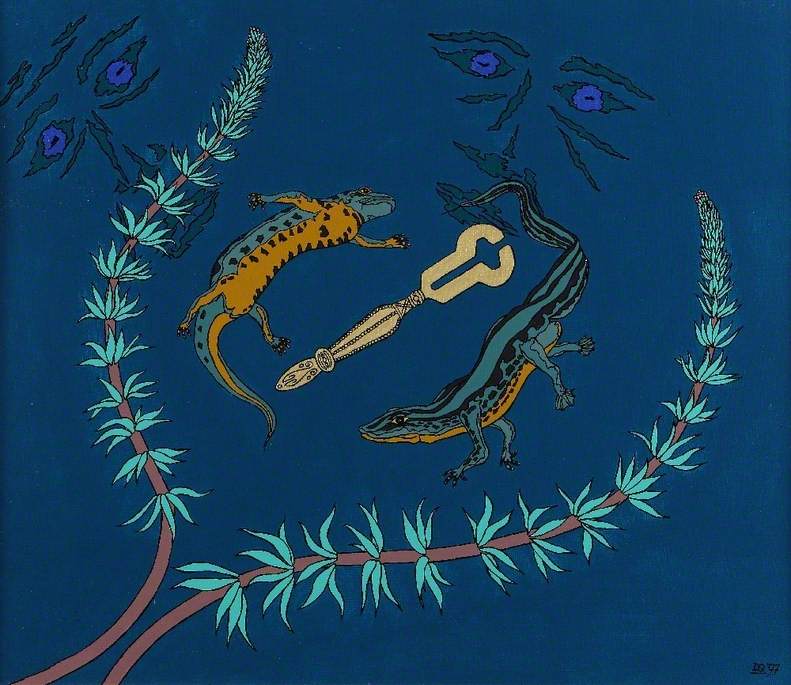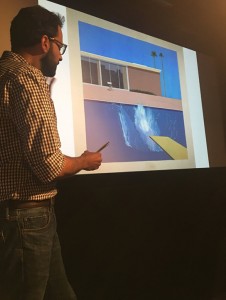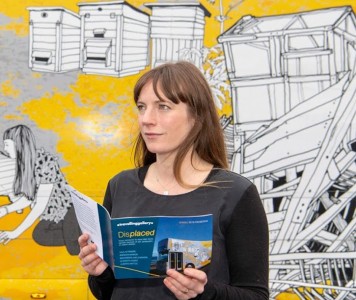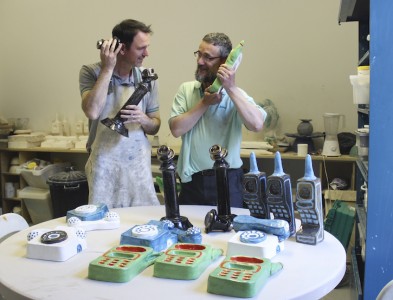For Art UK's 'Being...' series, we take a look at a day in the life of a professional working in the arts, heritage or museum sector. The artist Dez Quarréll – co-founder of Mythstories – speaks to Art UK about his career and what inspires him to create.
Dez Quarréll working at home
The Mythstories museum is a museum devoted to traditional oral storytelling. For over 20 years I've been creating illustrations and objects that tell tales. Now I'm wrestling with how to turn a museum into a digital resource for schools, making art a creative spark for literacy.
I'm an artist by nature, not by training.
In primary school, I spent hours after lessons cleaning glue pots while my teacher told Indian folk tales. I fell in love with the images they created in my mind. At secondary school, I escaped to the art block during the day and played in a jazz band every evening I could. I was academically gifted but rebelled against the structures of school life. These days I would be called neurodiverse. Then, at 15, I was expelled and joined a band – what else could I do?
For the next few years, I lived in Cambridge and London, soaking up the culture of those vibrant places. I discovered my passion for music was not matched by my playing ability and most of my income came from selling the sketches I drew of musicians to the music press of the day.
Fats Navarro
drawing by Dez Quarréll (b.1955) 
I was offered a job in a ceramics studio creating bespoke tiled murals for well-heeled clients. I had a regular income, a mortgage (!) and continued to create studies of musicians in action, this time in ceramics.
Tile Pictures
by Dez Quarréll (b.1955) 
My well-regulated life turned upside down when I became seriously ill in my 20s. Unable to return to ceramics, I set up a studio in my new home in Shropshire and began to explore those stories and images of India I had first discovered when young.
Newspaper clipping on Dez's work in Shrewsbury
After solo shows in galleries across the West Midlands, I was invited to schools to talk about my paintings, share the stories behind them and work with the pupils. The teenage rebel in me re-emerged as teachers let me take the lead in their classrooms. I relished the energy, enthusiasm and alternative viewpoints that the young people brought to the times I spent in their school. Together we created artworks in many forms, and the teachers began to report back on the educational and social benefits of the sessions.
Dez Quarréll teaching in Hadley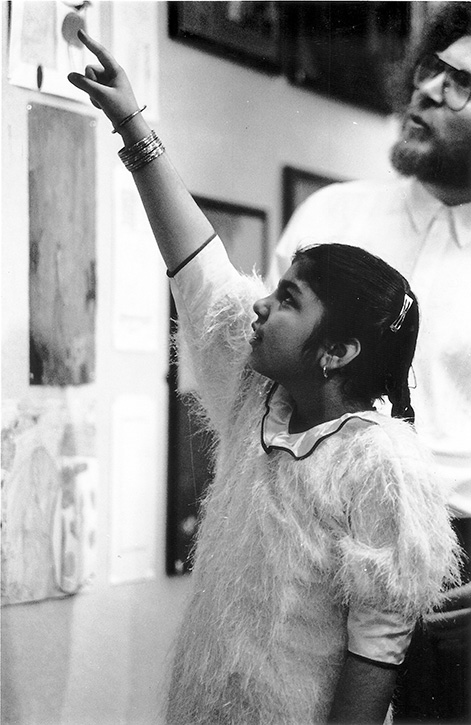
Again my life turned upside down. My son proved to be even more neurodiverse than I and I took on the task of teaching him through his secondary years. I used my experiences to design a way for him to learn. We spent many hours each week being inspired by works in museums and galleries across the West Midlands and beyond, and in the magnificent countryside to be found along the border between England and Wales.
In that countryside, I discovered a wealth of site-specific folktales and began painting these too. I exhibited these paintings across Shropshire tourist sites and my work was seen by many more people than those that had viewed it in galleries.
By 1998 I had a host of canvases depicting not only the Indian and Shropshire stories, but also tales of Native Americans and, a wonderful discovery, traditional European tales that had been relocated to Quebec by the early European settlers there. My son had happily embarked on the first of his many Open University degree courses. I was ready to resume my career when the long-term impact of my earlier illness raised its head. In less than 48 hours I became blind in one eye. At the time, I was painting The Talking Cat. Over the next six months, I mastered the techniques I needed to finish the canvas.
I also spent the small hours of the morning in the home of a neighbour who was setting up a business as an internet service provider – a very new occupation back in 1998. Together we created a website featuring my Shropshire illustrations and much of the background information and workshop ideas I had used in schools. A year later, that website became the recommended site for Key Stage 2 literacy as it joined 31 others on the UK government's newly launched National Grid for Learning.
And those were the experiences that led me to co-found Mythstories, a museum dedicated to traditional tales. Mythstories is a charity and – according to the BBC – the first museum of storytelling in the world.
As artist-in-residence I run the museum's projects, working with artists across many different art forms. And I have told stories to a great many visitors over the last 24 years. Many call me a storyteller but I am still, at heart, a visual artist. Working with limited and failing eyesight made working with acrylics on canvas very challenging, but when a friend gave me a Wacom tablet to fix up to my computer it liberated my visual imagination.
Arawe wanda
drawing by Dez Quarréll (b.1955) 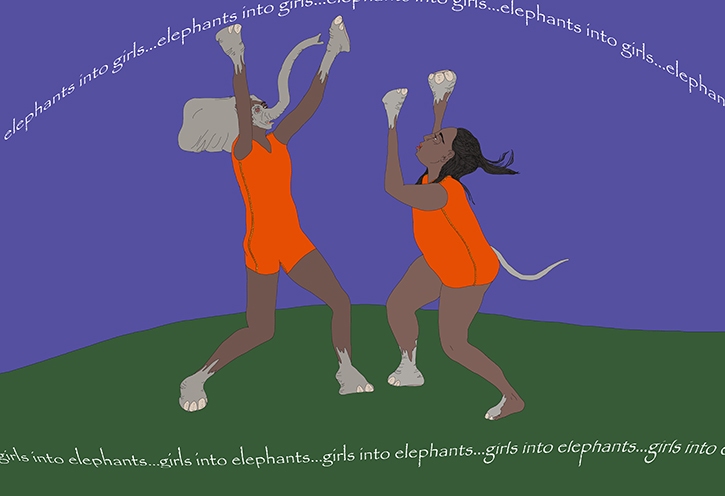
And now Mythstories has gone full circle and is re-developing as a digital resource. And you will find me amongst a bevvy of monitors and computers, wielding a stylus and a mouse or trackpad, creating digital images of traditional stories just like the ones that first I fell in love with as an eight year old all those years ago.
Dez Quarréll, co-founder and artist-in-residence at Mythstories museum
Do you work in the arts, heritage or museum sector? Would you be kind enough to share an example of your working day for our 'Being...' series? Please get in touch with Art UK at pitches@artuk.org as we'd love to hear from you.
Find art prints and gifts inspired by the Mythstories collection in the Art UK Shop
